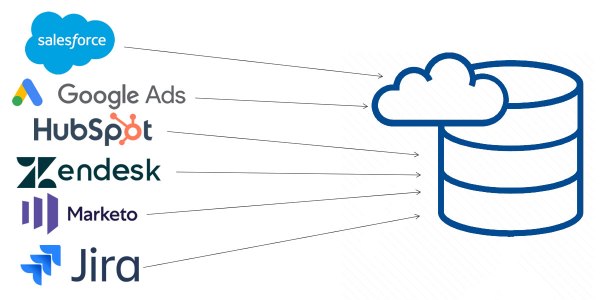Reverse ETL is a new key component of the modern data stack that enables “operational analytics.”

ETL/ELT
Before defining “reverse ETL”, let’s briefly talk about plain old ETL. Extract, transform, and load (ETL) is a data integration methodology that extracts raw data from sources, transforms the data on a secondary processing server, and then loads the data into a target database.
ETL is nothing new. The concept was actually popularized in the 1970s.

More recently, with the rise of cloud data warehouses, extract, load, transform (ELT) is beginning to replace ETL. Unlike the ETL method, ELT does not require data transformation before the loading process. ELT loads raw data directly into a cloud data warehouse. Data transformations are executed inside the data warehouse via SQL pushdowns, Python scripts, and other code.
ETL and ELT both transfer data from third-party systems, such as business applications (Hubspot, Zendesk, Salesforce) and/or databases (Oracle, MySQL), into target data warehouses. But with reverse ETL, the data warehouse is the source, rather than the target. The target is a third-party system.
What is reverse ETL?
Reverse ETL is the exact inverse process of ETL covered above. Simply put, it’s the process of copying data from the data warehouse to Saas products used by organizations.

Why would I move data out of the warehouse? Well, companies today increasingly engage in operational analytics – an approach consisting in making data accessible to “operational” teams, for operational use cases (sales, marketing, ..). We distinguish it from the more classical approach of using data stored in the warehouse only for reporting and business intelligence. Instead of using data to influence long-term strategy, operational analytics informs strategy for the day-to-day operations of the business. To put it simply, it’s putting the company’s data to work so everyone in your organization can make smarter decisions.
Reverse ETL is the tool responding to the new practice of operational analytics. It can be seen as a bridge between your data warehouse and cloud applications. Reverse ETL tools move the data out of your warehouse to the SaaS products your team loves and uses. For example, the Sales team wants the list of webinar attendees to import as leads into Salesforce, the Support team wants to see on Zendesk the data about accounts with premium support, Finance team wants a CSV of rolled up transaction data to use in Excel or Google Sheets.
The data needed is already available in the data warehouse and with reverse ETL, all you really need is to extract data from the warehouse and sync it to external tools, making it the simplest solution.
Etlworks and reverse ETL
Creating a Reverse ETL pipeline from scratch for such data is a complex process since businesses will have to utilize a high amount of resources to develop it and then ensure that it can keep up with the increased data volume and Schema variations.
Etlworks is a cloud-native data integration platform that allows you to perform ELT or reverse ETL with the help of your cloud data platform.
Etlworks helps you directly transfer data from a source of your choice, such as Snowflake, Amazon Redshift, etc., to any SaaS applications, CRMs such as Salesforce, HubSpot, etc., Support tools such as Zendesk, Jira, etc., in a fully automated and secure manner without having to write the code repeatedly. It will make your life easier and make data migration hassle-free.
Want to take Etlworks for a ride? Sign Up for a 14-day free trial and see the difference! Check out the pricing model to get a better understanding of which plan suits you the most.
